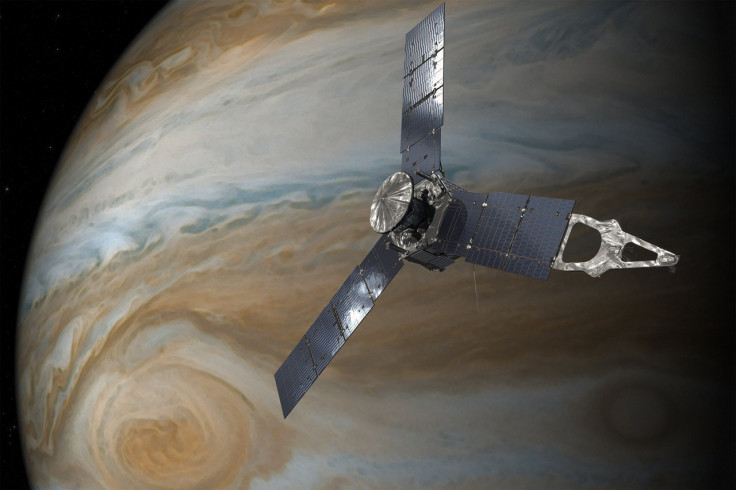Juno probe's latest findings suggest Jupiter's gravitational field is askew
Here are a few revelations that Juno has made over the last few months.

Nasa's Juno probe, which is currently orbiting Jupiter, has revealed that the giant planet's magnetic field is askew, with different patterns in its northern and southern hemispheres. Juno makes an orbit around Jupiter once every 53 days and this information was revealed after its latest pass in which it made the most detailed scan of the gas giant's interior makeup.
A report by Universe Today noted that the readily observable swirling nature of Jupiter's atmosphere is composed mainly of hydrogen, helium and ammonia crystals. There are also other compounds (called chromofores) that react and change colour when sunlight reaches them.
Until this mission, scientists were not clear on whether these particles in Jupiter's atmosphere were only on the outer layers, or also present deep within the planet.
Juno's mission was to uncover these details and study Jupiter's magnetic fields to see how it affects the planet's interior atmosphere.
The latest results also show that there is a lot of "hydrogen-rich gases" flowing deep within the planet, reports ScienceAlert.
The findings also pointed out that Jupiter's gravitational field is different at varying depths.
Jupiter's core is also believed to be found to be "small and poorly defined". This contradicts what was once believed to be an established fact about the planet which was that it has a gaseous outer layer, with metallic hydrogen and rocky core on the inside, notes the report.
Because this flyby occurs during solar conjunction we may not get confirmation of success until a week or so after the event.
— NASA's Juno Mission (@NASAJuno) October 24, 2017
"This is something that was not expected. We were not sure at all whether we would be able to see that... It's clear that giant planets have a lot of secrets," said Tristan Guillot a planetary scientist at the Observatory of the Côte d'Azur in Nice, France.
According to reports, Juno is also expected to uncover how deep the Great Red Spot extends into the atmosphere. Scientists are studying gravity data to determine this info behind Jupiter's most famous physical feature, which is actually a never-ending, ongoing storm that is large enough to completely swallow the Earth.
Earlier this year, Juno passed within 9,000 km of the spot and found that it extended to hundreds of kilometres into the atmosphere.
"It's not yet clear that it is so deep it will show up in gravity data. But we're trying," said David Stevenson, a planetary scientist at the California Institute of Technology.
Juno is the first scientific probe to fly and stay this close to Jupiter. It has revealed things about the planet like the cyclone clusters at its poles that were previously unknown.
Juno has also revealed that there are eight cyclonic storms in the North Pole and five towards the South Pole.
The probe's mission ends in February 2018, but till then, it will continue to collect data and reveal the many mysteries of the giant planet.





















